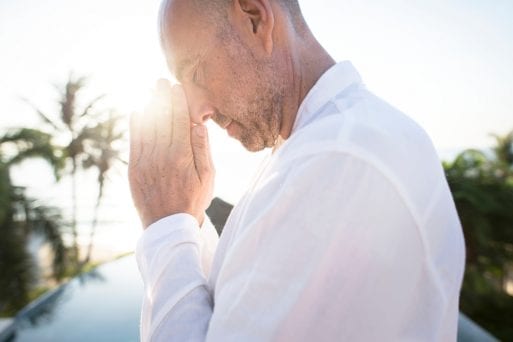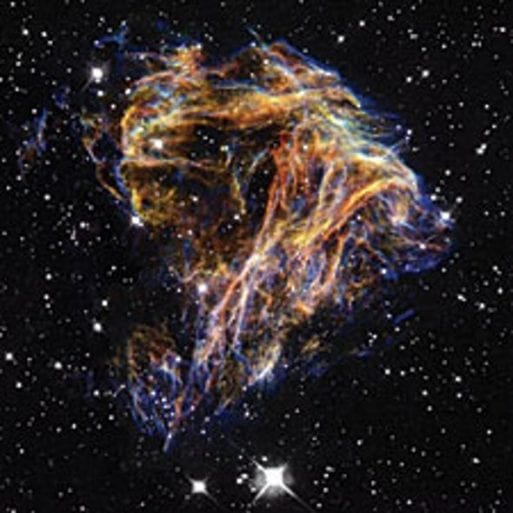
William emanated light and kindness.
Credit: spectrumretirement.com
This is Michelle’s story as told to Jeanette Summers. Our “Opening Our Hearts” stories are based on people’s real-life experiences. By sharing these experiences publicly, we hope to help our readers feel less alone in their grief and, ultimately, to aid them in their healing process. In this story, Michelle talks about her long-suppressed grief following the suicide of her spiritual teacher, who was suffering from severe chronic pain.
William, my spiritual teacher, died by suicide.
I was in the midst of exploring my spirituality when, through a series of Google searches, I happened upon William’s website. I reached out to him through the site, and we quickly fell into a student-mentor relationship that spanned about five years.
There wasn’t a hypocritical bone in William’s body. His goal wasn’t to gain followers or devotees in order to appease his ego or capitalize on people’s vulnerability. William never postured as a guru or hesitated to own up to his own shortcomings, and he discouraged people from paying him for his instruction, guidance or mentorship.
Our relationship was characterized by an intimacy I’d never encountered before — the kind of intimacy that can, perhaps, come only from sharing the personal insights and emotions one experiences while walking a spiritual path.
I checked in with William online every few days. Though there was a considerable age gap between us (I was in my 20s; William was in his 60s), and though we connected mostly virtually, our relationship was characterized by an intimacy I’d never encountered before — the kind of intimacy that can, perhaps, come only from sharing the personal insights and emotions one experiences while walking a spiritual path.
William had brown eyes that held a prescient, ethereal depth and warmth. He emanated pure love. But despite his unmatched kindness and his detachment from the earthly things that most of us cling to and believe define us, William’s spirit was confined in a body that was breaking down. Some time ago, William had slipped on a boulder along a river in Colorado and injured his back. The pressure this injury put on his right sciatic nerve generated a pain akin to “dental picks to a raw nerve” — the pain shot through the whole right side of his body. Medication wasn’t helping and, even with some assistance from the VA health system, he couldn’t afford to pay the medical bills that were piling up. In the suicide note published on his webpage — slated automatically to go live after he was dead — William wrote:
Simply put, I’ve no patience for getting old. Patient enough to put up with a week of excruciating pain to see if the meds do their job, but not patient enough to fight what is …
… Over time, I set up some tripwires — red-line events — that should I encounter any one of them, I’d simply check out of this life and start a new one:
Running out of money
Losing my home (my van, Serenity)
Unbearable pain not resolved by a trip to the emergency room …
There were no two ways about it: William wanted out. He had no desire to go on living broke and in searing physical agony, without the freedom to scratch the itch of his wanderlust. William didn’t wish to go on inhabiting his body. As he so matter-of-factly summed it up, “[he] simply [wasn’t] attached to life, so why live a life [he didn’t] want to?”

William drove his van Serenity to the mountains, where he took his own life.
Credit: redesignedinc.com
One day in August 2017, William drove Serenity out to one of his favorite camps along the Green River in Wyoming and put himself to sleep — eternally — with helium. William posted a selfie he snapped right before his suicide. In it, the expression on his face conveys the feeling that is embodied in the name of his beloved van: Serenity. His mouth is curled into a gentle smile, and his eyes, also smiling, radiate a clear, soulful contentedness. Perhaps because his soul was, indeed, full. “Do not feel sad,” William writes. “I have accomplished everything I have set out to do.”
When I read the note, I wasn’t exactly surprised, but that doesn’t mean I wasn’t shocked.
I found William’s suicide note when a mutual friend — and fellow spiritual pupil of William’s — texted me, telling me to go look at William’s blog. When I read the note, I wasn’t exactly surprised, but that doesn’t mean I wasn’t shocked. William had always been a nomad who sought travel opportunities and communion with nature, but his reclusiveness reached new heights about six months before his suicide. He’d disappeared — phased out contact with everyone except his elderly mother. I intuited that William’s suicide might be fast-approaching (his life was something he could take or leave — I knew this). When I found out that he actually went through with it, I initially couldn’t feel much of anything: vague pangs of sorrow intermingled with the love that had always been there, maybe, but not grief. Not pain.

I was shocked when I read William’s suicide note on his website that August day.
I admit that when I learned he’d vacated his body that August day, I felt unshackled — free to move in my own direction, to pursue my own spiritual path without having to answer to or disappoint anyone. These feelings of relief came with a guilt that ate me up silently from the inside out — William had been such a source of light, inspiration, and support.
My guilt led me to suppress my grief for two years. I knew something was wrong, but I couldn’t place or name it, and I couldn’t figure out how to fix it. I tried everything I could think of: traditional talk therapy, meditation, even past life regression to explore possible wounds and scars leftover from a previous incarnation. Nothing worked. Finally, it struck me: I was unconsciously mourning not only my teacher, but also the death of who I was and everything I had hoped for, spiritually, when I was younger.
“Do not be sad for me,” William wrote. “For years I’ve looked forward to death. I’ve longed to merge with the Light/Her/my Beloved again.
When I think of William’s death, I don’t think of tragedy. Yes, he died by suicide. Yes, he terminated his life by unnatural means. Yes, I miss his presence in my life. But maybe it was his time. I think of how in some indigenous tribes, when a person is sick or elderly, they go off into the woods and die. In a sense, this is exactly what William did. “Do not be sad for me,” William wrote. “For years I’ve looked forward to death. I’ve longed to merge with the Light/Her/my Beloved again. Not out of sadness or depression or anything negative, but — like two lovers once separated — as an eagerly awaited reunion.”
William saw the beauty and goodness in the world. In his final message, he wrote:
One of the most profound benefits of losing the fear of death is that you learn to appreciate life in all its splendor — especially in the simplest, everyday things.
But he’d had enough of this life. He was ready to leave. Death was what he wanted, and death was what he chose. And maybe in this choice, William finally found the peace and freedom he always sought in life.

William believed that no one ever dies and planned to come back in new form
Maybe he was right.
Credit: scientificamerican.com
William stated in his suicide note that he would be coming back — that his soul’s work was unfinished. In fact, he described his suicide as “a shortcut to his next life’s awakening.”
His closing sentiment: “I’ll see you soon (no one ever dies).”
I’m no authority on whether or not this is true, but maybe it is. Maybe the next body William inhabits will be unbroken. Maybe he’ll get another chance. I’m on my own trajectory now, and William, wherever he is, is surely on his. But maybe — someday — we’ll find each other again.

 My Spiritual Teacher Died by Suicide
My Spiritual Teacher Died by Suicide


 How Dare You Die Now!
How Dare You Die Now!
 Debating Medical Aid in Dying
Debating Medical Aid in Dying















